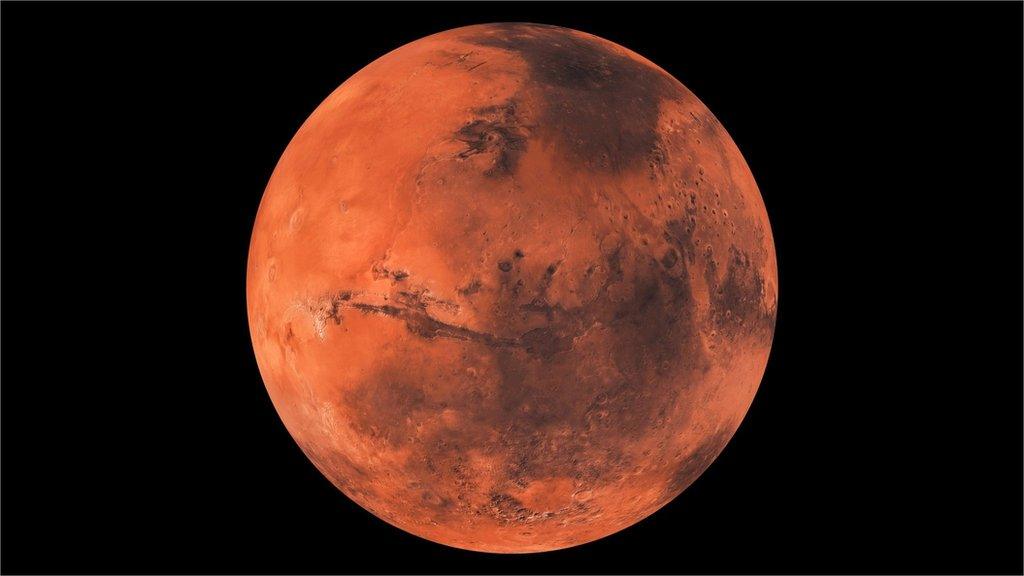Nasa makes oxygen on Mars using Perseverance Rover
- Published
- comments
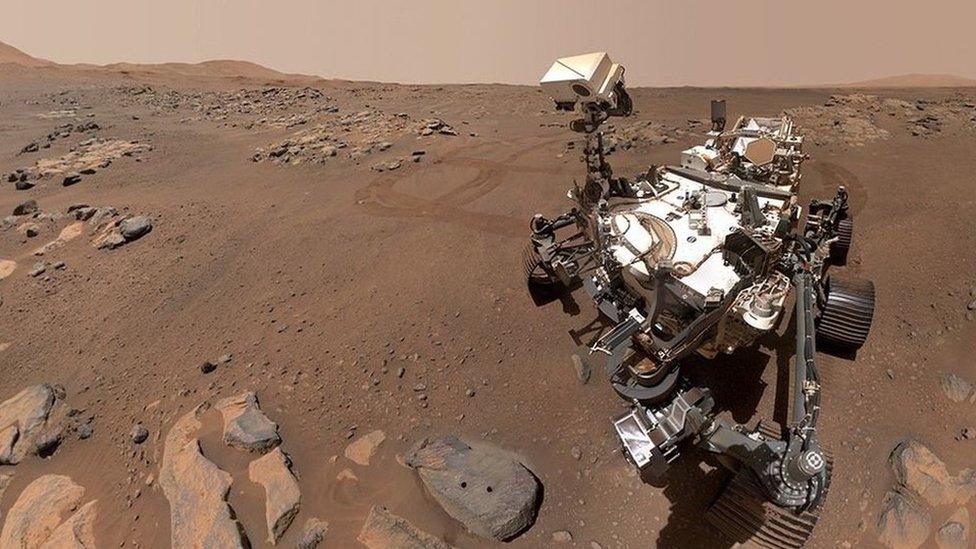
A toaster-sized device on Nasa's Perseverance Rover has been producing oxygen from the Martian atmosphere
Nasa has managed to produce enough oxygen on Mars to allow an astronaut to breathe for several hours.
A toaster-sized device called Moxie, onboard the American space agency's Perseverance Rover, landed on the Red Planet in February 2021 and has made 122 grams of the gas - enough for an astronaut to breathe for roughly three hours.
Oxygen is one of the main gases that make up air on Earth and is needed by virtually all life on our planet to survive.
Nasa's hope is that future human missions will take much bigger versions of Moxie to the Red Planet rather than carrying tanks of breathable oxygen with them on rockets from Earth.
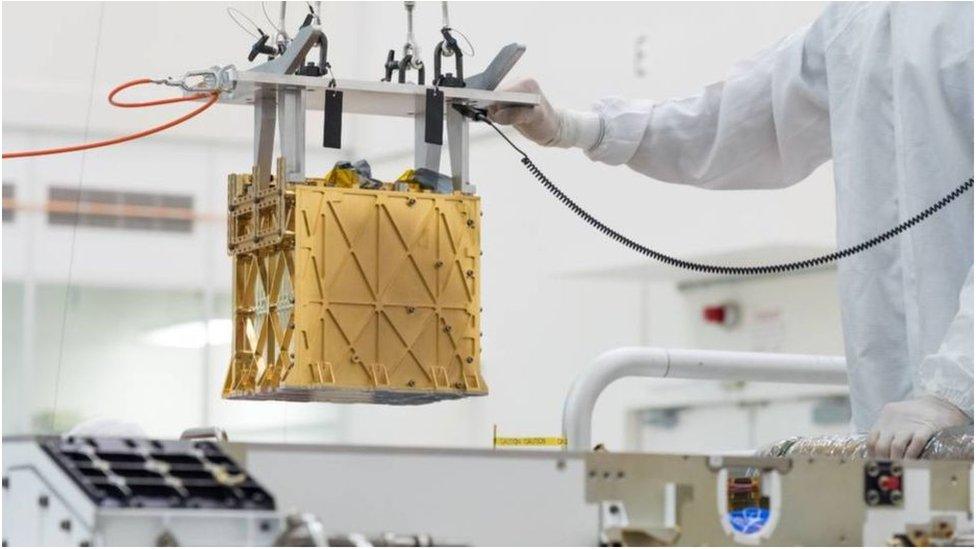
Future human missions to Mars would take bigger versions of Moxie
How does Moxie make oxygen on Mars?
Mars' atmosphere is almost entirely made up of carbon dioxide (CO₂) - 96% of the planet's air contains CO₂.
Oxygen is only at 0.13%, compared with 21% in Earth's atmosphere.
Moxie is able to strip the oxygen atoms from CO₂ molecules, which are made up of one carbon atom and two oxygen atoms.
A molecule is made up of two or more atoms that have bonded together.
The number and kinds of atoms in a molecule, and the way they are arranged, decide what substance it makes.
For example, a molecule made of two oxygen atoms joined to one carbon atom forms carbon dioxide - or CO₂.
The C is carbon and the O is oxygen. The ₂ next to the letter signifies how many atoms of this element make up the molecule.
Almost everything in the universe is made of atoms and molecules.
Perseverance: Find out about Nasa's Rover and its mission on the Red Planet (May 2022)
Could Moxie mean future human life on Mars?
Not only is oxygen vital for astronauts to breathe it's also an important part of burning rocket fuel when it comes to blasting off into space.
So far, Moxie has produced oxygen on 16 separate occasions since its first attempt, two months after landing on Mars in April 2021 - a result that Nasa says is much better than expected.
"Moxie's impressive performance shows that it is feasible to extract oxygen from Mars' atmosphere - oxygen that could help supply breathable air or rocket propellant to future astronauts," said Pam Melroy from Nasa.
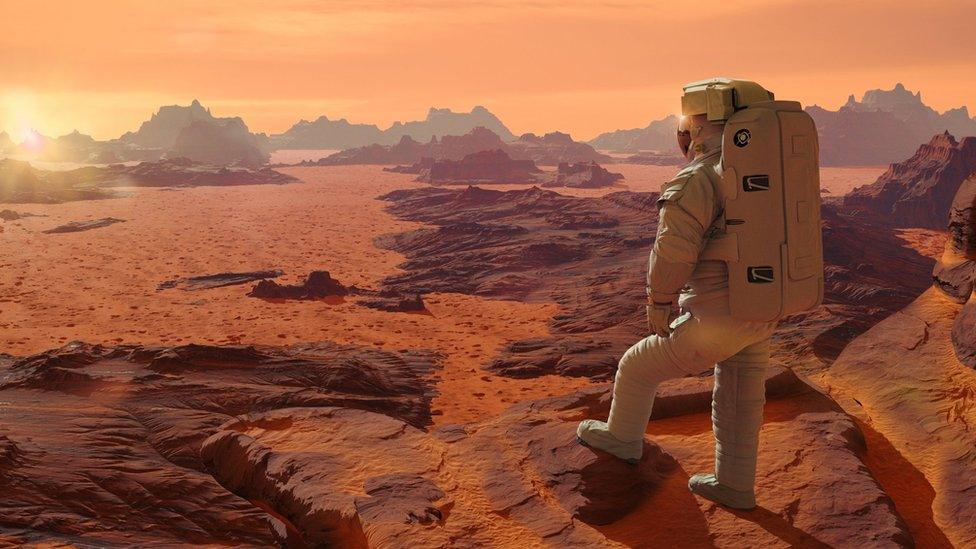
- Published17 May 2022
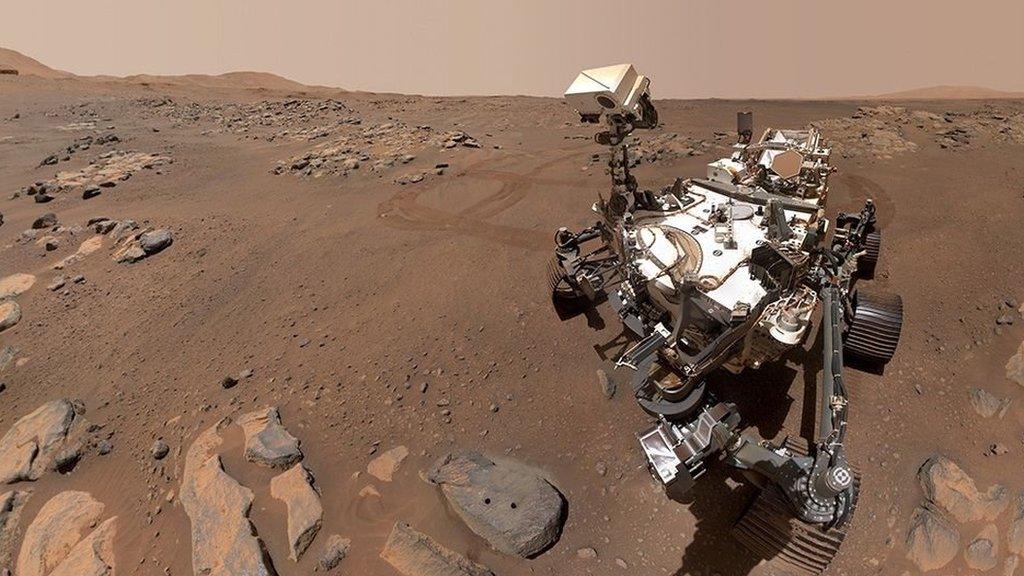
- Published10 September 2023
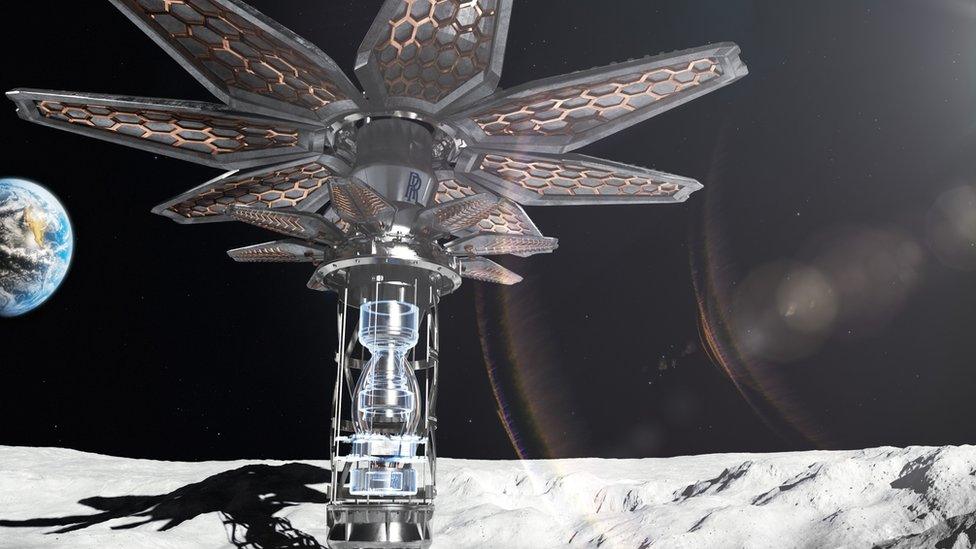
- Published22 February 2021
